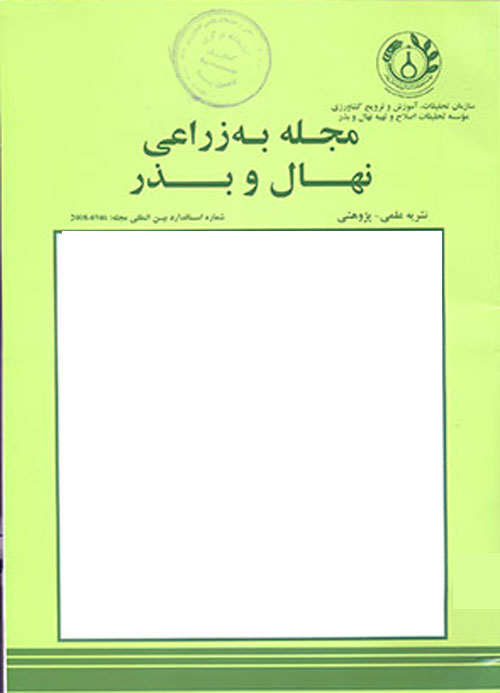Effect of Application of Streptomyces Bacterium on Grain Yield and Its Components of Maize cv. KSC260 under Drought Stress Conditions
Abstract:
To determine the effects of different levels of irrigation and streptomyces bacterium on grain yield and its components of maize cv. KSC260 a field experiment was carried out. The experiment was carried out as stripe split plot arrangments in randomized complete block design with three replications in 2009 and 2010 growing seasons in Seed and Plant Improvement Institute Karaj, Iran. Experimental factors included: three levels of irrigation (A); 70, 100 and 100 mm evaporation from standard evaporation pan (class A) as optimum, mild stress and severe stress, respectively, and four bacterium treatments (B), control (no chemical fertilizer and no bacterium), fertilizer, bacterium + fertilizer and bacterium. Results showed that irrigation levels significantly (P < 0.01) affected leaf dry weight, leaf area index, leaf chlorophyl index, plant height, ear length, ear diameter, biological yield, kernel no. row-1 1000 kernel weight and grain yield. Irrigation levels also significantly (P < 0.05) affected days to silking, anthesis to silking interval, ear height, stem diameter and ear no. plant-1. Bacterium treatments also had significant (P < 0.01) effect on days to anthesis, days to silking, leaf number, leaf dry weight, leaf area index, leaf chlorophyll index, stem diameter and ear diameter. It also had significant (P < 0.05) effect on days to tasseling, ear number, row no. ear-1, 1000 kernel weight. The highest and lowest grain yields were obtained from optimum irrigation (5649 kgha-1) and severe stress (3574.5 kgha-1) conditions. It was concluded that the highest performance of cv. KSC260 was in optimum irrigation with application of Streptomyces bacterium and nitrogen and phosphorous.
Language:
Persian
Published:
Seed and Plant Production Journal, Volume:27 Issue: 2, 2011
Pages:
165 to 181
https://magiran.com/p910158


